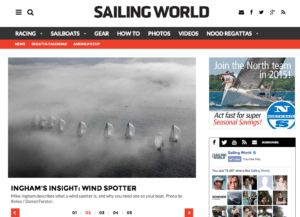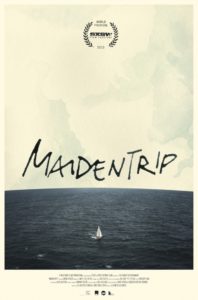I often wonder how, back in the day, regattas existed without the cash support of sponsors. Different times, I know. Nonetheless, this curiosity recently found me pulling out a year’s worth of issues from 1971 (the year I was born). Not a single issue of One-Design & Offshore Yachtsman referenced a title sponsor for a world championship or other important race-week-type event. Where and when the sponsorship switch got turned on I don’t know, but today that switch has pretty much turned off. Events with local support or the likes of Rolex, Audi, or Sperry Top-Sider in front of your regatta’s name, consider themselves lucky.
Sponsorship of sailing events is a hard sell, even at the top of the game. The struggles of our marquee event, Key West Race Week, to find a title sponor has long been the canary in the coal mine. If your current hunt for sponsors for your big weekend regatta or class championship feels as if you’re sailing on a 20-degree header, it’s time to take a different tack.
In his column this month (Gaining Bearing), Ken Read laments about how his beloved State of Rhode Island whiffed the golden opportunity of hosting the 34th America’s Cup (as well as a Volvo Ocean Race stopover). But it wasn’t a total lost cause because in the process, the VOR and Oracle racing machines made local and state politicians go through a massive exploratory exercises that ultimately exposed one critical selling point for future regattas everywhere: a regatta, big or small, is a boon to the local economy. We can capitalize on this.
As part of the bidding process, the politicos conducted an economic impact study (available at www.sailingworld.com/0311study) and, in doing so, they highlighted three regattas held in Newport in 2009 (the heart of the recession, by the way): a 400-boat Optimist New England Championship, the 6-Metre Worlds, and the Coastal Living Regatta (a multi-class three-day regatta). What they found was that collectively these three “relatively small events” brought in $2.8 million—68 percent of that on food and lodging alone.
The obvious takeaway is that a whole bunch of sailors (and parents in the case of the Opti regatta) came to sail and spent a lot of money. They weren’t just tourists buying T-shirts. That’s easy money straight into the pockets of the local businesses, and ultimately the state coffers. And this was only three of the many regattas held that year.
So what does this mean for you, your local sailing scene, or your next class championship? Maybe it’s time we cut back on cold calling would-be sponsors and start putting some numbers in front of city governments. Clearly, there will be real local benefits to our regattas, whether it be the 2011 Lightning North Americans in La Salle, Mich., or the Hobie 16 NAs in Fort Walton Beach, Fla., each of which can attract upwards of 70 boats, most from out of town. We can use the Newport experience to make other tourism boards and Chamber of Commerce groups in other sailing venues take notice of our regattas and support them. We get them to invest in our public sailing facilities so they’re capable of hosting more and even bigger regattas in the future. Everybody wins.









